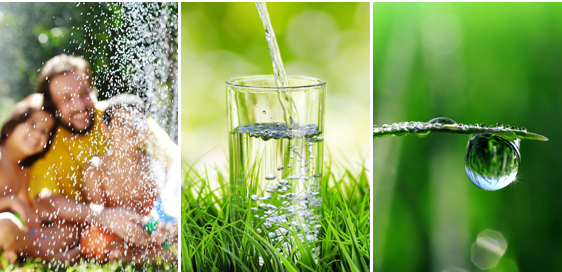“Water is the driving force of all nature”
~ Leonardo da Vinci
First of all, water quenches our thirst. Without water humans, animals or plants cannot live. Freshwater is vital for the survival of
- ecosystems,
- health and well being,
- livelihoods,
- sanitation,
- agriculture,
- transport,
- electricity generation and also for
- recreational activities.
Furthermore, agricultural and farming sectors, fisheries, businesses, communities and individuals use freshwater. Not only humans but animals and plants that are central to the ecosystem also need water. Therefore, it is a ‘shared resource’.
Future of Freshwater
According to the National Aeronautics and Space Administration (NASA), about 70 percent of Earth’s surface is covered in water. 95 percent of all water is in the oceans. But only 3 percent is freshwater. Out of that 3 percent almost 2 percent is found in glaciers at the North and South poles. The remaining 1 percent is mostly groundwater, and only a small fraction fills the world’s lakes and rivers.
Conservation International affirms that “demand for freshwater outstrips the supply”. The organization raises awareness on how industrial processes and humans have contributed in towards the pollution of freshwater systems. Impaired water quality adversely affects ecosystems, humans, animals and plants. As a result, climate change has directly affected freshwater systems. Earth is vulnerable to droughts, floods and other environmental calamities.
The United Nations estimates that half of the people on Earth will likely face water stress by 2030. Most noteworthy is that human civilization is said to be born on a river bank. This links human development with water. The Fresh Water Health Index highlights a critical gap in the understanding and monitoring of how we are altering the world’s freshwater ecosystems and its impacts on humans. “80% of the global population is threatened with insufficient water quantity or quality”. The biggest danger is the scarcity of freshwater could be a source of contention among nations. Probably this could lead to wars. Heidelberg Institute for International Conflict Research (2007) provides several reasons for a rise in water conflicts, including
- territorial disputes
- a fight for resources and
- for strategic advantage.
Using freshwater in a sustainable and resilient manner
Strategic Foresight Group report titled ‘Water Cooperation for a Secure World – Focus on the Middle East, 2013‘ has opined that comprehensive efforts on water cooperation between countries reduce the risk of war. An example is the Indus Waters Treaty between India and Pakistan. This World Bank brokered it in 1960. Creating international consensus on water sharing, water preservation and careful consumption is very important.
Individuals can take precautions every day in their day to day activities such as
- Closing faucets tightly and careful usage of faucets
- Using water sparingly when washing clothes and showering
- Minimizing the use of water in fountains
- Minimized use of water for decorative purposes in public places or at homes.
Hence, encouraging water recycling for more sustainability and working towards the achievement of the following Sustainable Development Goals is vital.
- Clean Water and Sanitation (Goal 6)
- Climate Action (Goal 13)
- Life Below Water (Goal 14)
- Life on Land (Goal 15)
In addition, for more information on how we as individuals can help save water simple online google searches suffice. For example the City of Sandiego website tells us how to save water indoors and outdoors.


